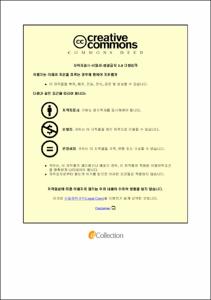우리나라 노인의 성별에 따른 골다공증 유병 관련 요인
- Alternative Title
- Factors related to the Prevalence of Osteoporosis According to Gender of the Elderly in Korea : Data from the 2020 National Survey on Korean Older Persons
- Abstract
- Purpose: This is to provide basic data on health care policies for the prevention and management of osteoporosis in the elderly by identifying factors related to the prevalence of osteoporosis according to the gender of the elderly in Korea.
Methods: This study used raw data from the 2020 National Survey on Korean older persons. In order to find out the factors related to the prevalence of osteoporosis in the elderly, 10,097 people who participated in the survey were selected as subjects for this study. A complex sample analysis was conducted by applying parameter estimation weights to the elderly survey data, and the IBM SPSS statistics ver 26.0 program was used for statistical analysis. The statistical significance level was set to .05 and tested.
Results: The prevalence of osteoporosis was 1.7% for male seniors and 13.7% for female seniors. The results of the multivariate analysis on the factors affecting osteoporosis prevalence are as follows: Elderly men have an increased risk of osteoporosis in annual income levels, subjective health status, thyroid disease, back pain and sciatica, and anemia. Elderly women are identified as having common risk factors for osteoporosis, including drinking, nutrition status, subjective health status, hyperlipidemia, osteoarthritis/rheumatoid arthritis, back pain and sciatic neuralgia, and anemia. Additionally, being overweight reduces the risk of osteoporosis in elderly women, as indicated by BMI.
Conclusion: Since the prevalence of osteoporosis is influenced by different factors in elderly men and women, it is necessary to develop differentiated intervention strategies based on gender. In addition, certain factors such as subjective health conditions, low back pain/sciatica, and anemia are commonly associated with osteoporosis in both male and female elderly individuals. These factors can serve as fundamental evidence for the prevention and management of osteoporosis.| 목적: 우리나라 노인의 성별에 따라 골다공증 유병과 관련된 요인을 파악하여 노인 골다공증의 예방 및 관리를 위한 보건의료 정책의 기초자료를 제시하기 위함이다.
방법: 본 연구는 2020년 노인실태조사 원시자료를 이용하였다. 노인 골다공증의 유병 관련 요인을 알아보기 위해 조사에 참여한 10,097명을 본 연구의 대상자로 선정하였다. 노인실태조사 자료에 모수추정 가중치를 적용한 복합표본분석을 실시하였고, 통계분석은 IBM SPSS statistics (ver.26)을 사용하였다. 통계적 유의수준은 0.05로 설정하여 검정하였다.
결과: 골다공증 유병률은 남성 노인의 경우 1.7%, 여성 노인은 13.7%로 나타났다. 골다공증 유병 요인에 대해 다변량 분석을 실시한 결과 남성 노인의 골다공증 유병 관련 요인은 소득수준, 주관적 건강상태, 갑상선 질환, 요통 및 좌골신경통, 빈혈로 나타났고, 여성 노인에서는 BMI, 음주, 영양관리상태, 주관적 건강상태, 고지혈증, 골관절염/류머티즘 관절염, 요통 및 좌골신경통, 빈혈이 골다공증 유병 요인으로 확인되었다.
결론: 골다공증 유병은 남성과 여성 노인에서 영향을 미치는 요인이 서로 다르므로, 성별에 따른 차별화된 중재 전략이 필요하다. 또한 남성과 여성 노인 모두 주관적 건강상태, 요통 및 좌골신경통, 빈혈이 공통적으로 유병 관련 요인으로 확인되어 골다공증 예방 및 관리를 위한 기초 근거 자료로 활용할 수 있다.
- Issued Date
- 2023
- Awarded Date
- 2023-08
- Type
- Dissertation
- Alternative Author(s)
- Han, Jeong Heum
- Affiliation
- 제주대학교 보건복지대학원
- Department
- 보건복지대학원 보건학과
- Advisor
- 홍성철
- Table Of Contents
- Ⅰ. 서론 1
1. 연구 배경 및 필요성 1
2. 연구 목적 4
Ⅱ. 연구 방법 5
1. 연구 자료 5
2. 연구 대상 6
3. 연구 모형 7
4. 연구 변수 8
5. 자료 분석 14
Ⅲ. 연구 결과 15
1. 성별에 따른 노인 골다공증의 요인별 특성 15
2. 성별에 다른 노인 골다공증의 유병 관련 요인 35
Ⅳ. 논의 39
Ⅴ. 결론 및 제언 42
참고문헌 44
Abstract 51
감사의 글 53
- Degree
- Master
- Publisher
- 제주대학교 보건복지대학원
- Citation
- 한정흠. (2023). 우리나라 노인의 성별에 따른 골다공증 유병 관련 요인.
- Appears in Collections:
- Graduate School of Public Health and Welfare > Public Health
- 파일 목록
-
-
Download
 우리나라 노인의 성별에 따른 골다공증 유병 관련 요인.pdf
기타 데이터 / 1.01 MB / Adobe PDF
우리나라 노인의 성별에 따른 골다공증 유병 관련 요인.pdf
기타 데이터 / 1.01 MB / Adobe PDF
-
Items in Repository are protected by copyright, with all rights reserved, unless otherwise indicated.